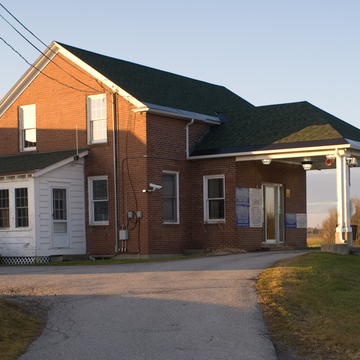Perched with Edward Hopper austerity in open fields just south of the U.S./Canadian border, this is one of the smallest and simplest of border stations erected in Vermont between 1931 and 1937. Previously, customs and immigration offices were located in larger communities near significant water or railroad entrances to the country as at St. Albans, Richford, and Newport. But a variety of forces, including increased automobile traffic (vehicular crossings at Highgate Springs increased fiftyfold during the 1920s), Prohibition (making smuggling a significant border-area occupation), immigration quotas, and improved roads in the aftermath of Vermont's disastrous floods of 1927, made it strategically important to post stations at road crossings instead.
In the 1930s the Treasury Department devised five standard designs, from which they constructed forty-eight stations along the Canadian and Mexican borders with funding from the National Recovery Act of 1933. Vermont received thirteen stations, based on all five models, which typically contained quarters for the officers and activities of customs and immigration programs and were fronted by vehicular canopies to shield inspectors from weather. With twelve extant stations (in Highgate [FR5], Alburg, Morse's Line, West Berkshire, Richford, East Richford, North Troy, Beebe Plain, Derby Line, Norton, Canaan, and Beecher Falls), Vermont boasts the nation's largest and most representative grouping of the genre, one that established a notable federal presence along the border.
Morse's Line received a one-and-a-half-story, brick-veneered, eaves-front structure fronted with a centered hipped-roof extension containing office space and a single-lane vehicular canopy that gives it something of the appearance of an early filling station. The office, with desks for both customs and immigration officers, was flanked with mirror-image living quarters entered from twin, enclosed gable-end porches. The remote location, away from major trucking routes, has preserved its design intact. As a debate at the federal and local levels ponders its expansion or closure, it sits frozen in time, a reminder of earlier days when bootlegging and Canadian immigration into rural Vermont were national issues.


















